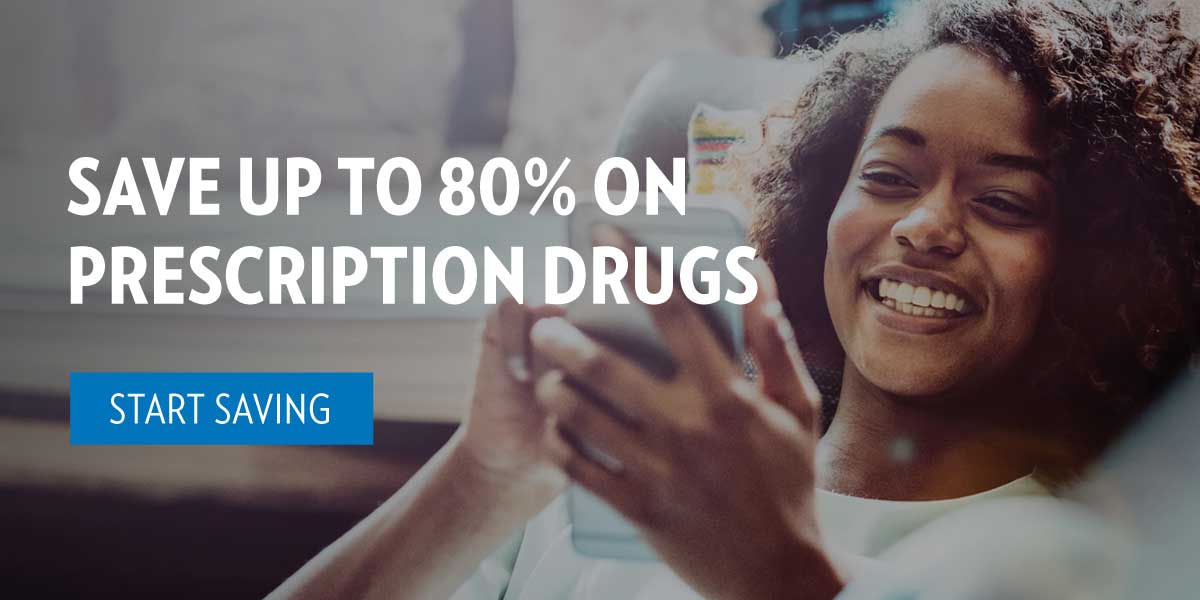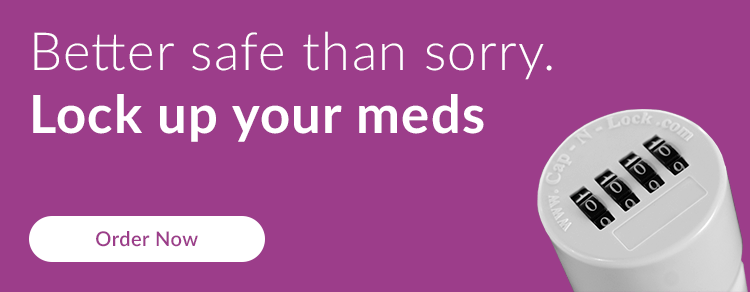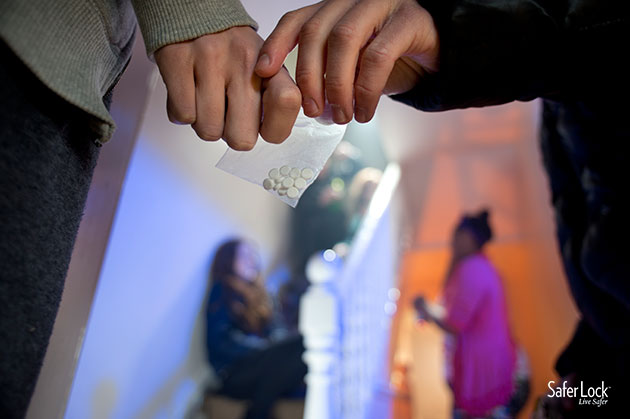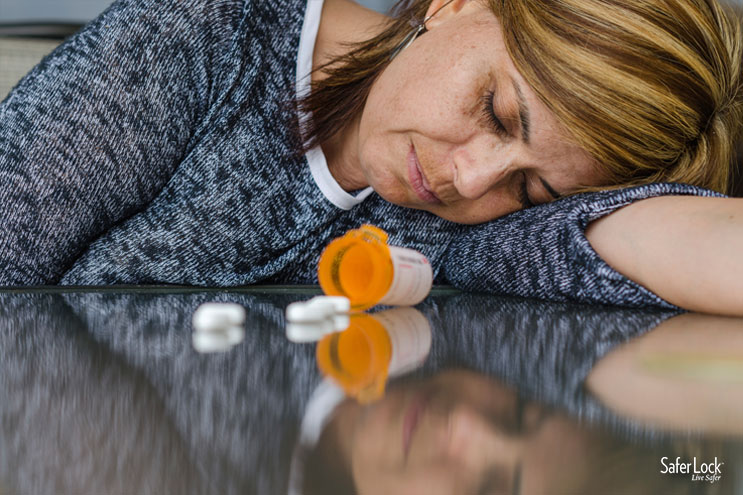Parents can often feel overwhelmed by the dangers their teens face every day. Teens face risks from riding in vehicles with intoxicated friends, driving while texting, experimenting with prescription drugs, internet addiction and more.
It’s natural to be worried about your teens in this environment. But don’t lose hope- not yet. Recent reports and surveys are showing that teen drug use is declining, and that your efforts are paying off.
11 Uplifting Facts About Teen Addiction
Every year, the National Institute on Drug Abuse (NIDA) releases a survey of drug use and attitudes among 8th, 10th, and 12th graders in the US. While the report shows there is still reason to keep up your diligence in your efforts to prevent drug use and abuse in your home, there is good news to celebrate, too.
Here are 11 drug use stats that will keep you hopeful as you parent your teen.
#1: OxyContin abuse has fallen.
Despite the current opioid epidemic, the abuse of certain prescriptions among teens has decreased significantly.
For example, fewer teens are abusing OxyContin, a highly addictive prescription painkiller.
According to the ongoing Monitoring the Future study, the use of OxyContin among 12th graders has declined from 4.3% in 2012 to 3.7% in 2015.
#2: Vicodin use has decreased.
The decline in Vicodin use is even more dramatic than the decline in OxyContin use. It fell from 7.5% of 12th graders in 2012 to 4.4% in 2015.
There are more than 130 million prescriptions for Vicodin distributed each year in the US, and teens often experiment with this and other painkillers when they are easily available at home.
Parents who lock up their prescription painkillers may be contributing to a decrease in teen use by removing the ease of access to these highly addictive drugs.
#3: Underaged drinking has declined dramatically.
In 2015, 37.3% of 12th graders said they had been drunk in the past year. In 2001, that number was 53.2%.
Teens who drink admit they do so because alcohol is easy to get and readily available.
Parents and older siblings who restrict availability of alcohol in the home may be contributing to the decline of teenage drinking by making it harder for teens to get access to alcohol.
#4: Binge drinking is less popular.
Binge drinking has been defined as consuming 5 or more drinks in a row, and it’s a practice that can be extremely dangerous.
Studies have shown that drinking in excess can damage nerve issue in a teens brain, resulting in long-term damage and memory issues. Worse yet, binge drinking can lead to drunk driving accidents, homicides, and suicides.
You’ve been talking to your teens about the dangers of binge drinking, and they’ve been listening.
Teenage binge drinking has decreased, falling from 31.5% in 1998 to 17.2% in 2015.
#5: Teens disapprove of regular marijuana smoking.
Medical and/or recreational marijuana has been legalized in 23 states, and 68.1% of teens reported that they don’t view regular smoking as harmful.
The rising popularity of marijuana can be concerning, since regular pot use is harmful to teen’s developing brains.
That’s why it’s encouraging to learn that 71% of teens disapprove of regular marijuana smoking.
#6: Fewer teens smoke cigarettes than ever before.
This statistic is down from roughly 35% in 1995. Only 11.4% of 12th graders have smoked in the last month.
There has been a 54.9% drop in daily smoking (from 6.6% to 3%) among 10th graders in the past five years.
#7. Teens are recognizing the danger of e-cigarettes.
When e-cigarettes burst on the scene, teens embraced the electronic devices as a healthier, safer alternative than cigarettes. Cigarette use declined, but 2 million high school students picked up the electronic alternative (an increase of 800% since 2011.)
But e-cigarettes are not the safe alternative they profess to be.
Many e-cigarettes contain nicotine, the same addictive substance found in traditional cigarettes. And the vaper used in all e-cigarettes (whether they have nicotine or not) is full of chemicals that have been known to cause cancer, such as formaldehyde.
As the dangers of e-cigarettes come to light, it appears that some teens are listening:
There’s been an increase in 8th and 10th graders who view smoking e-cigarettes as harmful.
Parents who talk to their teens about the combined dangers of smoking and “vaping” (smoking e-cigarettes) can make a difference in their teen’s attitudes about both.
#8: Teen marijuana use is down.
It may be a small decrease (2%), but it’s interesting to note that teen marijuana use is actually lower today than it was in 2012.
And it just may be that legalization of recreational marijuana is actually contributing to lower rates of teen marijuana use.
Recreational marijuana laws in Colorado, Oregon, and Washington restrict sales to anyone under the age of 21. In addition, the passing of legalization legislation seems to be opening the door to more communication about the dangers of teen marijuana use.
When parents and teens talk openly and frankly about marijuana’s potential to negatively impact the teenage brain, teens listen.
#9: Heroin use is at an all-time low.
Heroin use in the US is still at epidemic proportions, and a major cause of concern for lawmakers, legislators, police, public health officials, and even the White House.
But it appears that teens are recognizing the dangers of heroin.
Just 0.5% of 10th and 12th graders have tried heroin in the past year. This is the lowest rate of Heroin use among teens since the Monitoring the Future study began in 1975.
#10: Ecstasy use has declined.
Use of MDMA, aka Ecstasy or Molly, has declined. Just 3.6% of high school seniors report use in the past year, compared to 5% in 2014.
That’s incredibly good news for a “party” drug whose use had been rapidly increasing since 1998. MDMA is a potent drug that combines amphetamines with hallucinogen, resulting in a toxic, dangerous, and addictive drug.
Despite celebrities and recording artists such as Kanye West and Miley Cyrus glorifying “Molly” use in song lyrics, it appears that teens are recognizing the dangers of the club drug and saying no to MDMA.
#11: Synthetic drug use is down.
The use of synthetic drugs such as synthetic marijuana and bath salts has declined dramatically. 5.2% of 12th graders reported using synthetic marijuana in 2015, compared to 11.4% in 2011.
This decline is news worth celebrating- it’s harder for buyers to know what chemicals synthetic drugs contain, and how potent they are. This makes them extremely dangerous.
The fight against addiction is hard, and it’s not likely to go away soon. But these statistics show just how effective your efforts to keep your kids safe can be.
Addiction can be treated and prevented.
How You Can Help Prevent Teen Drug Abuse in Your Home
Empower yourself and your family by taking a few key steps to prevent teen addiction.
You can start by talking to your kids- education is an important step in preventing drug abuse.
We know it feels like they don’t hear you. It’s hard to feel like sitting them down to chat about drugs and alcohol has any sort of impact when all you get in return is a scowl and a “whatever, Mom.”
But they do listen.
In addition to talking to your teens about the dangers of drug, nicotine, and alcohol use, make sure your own home isn’t an unwitting supplier to your teen (or their friends).
Ease of access to prescription pills, pot (medicinal or recreational), alcohol, or cigarettes is one of the biggest reasons a teen will experiment in the first place.
If you have any of the above in your home, be sure to keep them locked away and out of the hands of your teens.
When used as a preventative measure, medicine lock boxes can help save lives. They can prevent accidental poisonings and help prevent curious teens from having access to opioids.
Securing alcohol and keeping track of how much you have on hand can prevent teen drinking.
And any medicinal or recreational marijuana in your home should be securely locked away just like any other prescription medication - in a locking medicine box or locking pill bottle.
It’s Never Too Late.
If your teen has displayed signs of drug use or addiction, treatment can be effective. Addiction is a chronic disease, and like any disease it requires treatment. And it’s never too late to seek help for your teen.
Treatment programs typically include a combination of medication and behavioral therapy. These programs may be long or short-term, inpatient or outpatient. Which method will be most effective depends on the individual addict.
Yes, opioid addiction is an epidemic. Addiction and overdose claims lives everyday. But don’t lose hope. Your fight to educate your kids and keep them safe is effective.
Keep up the hard work- you’re creating a safer world for your teens.





